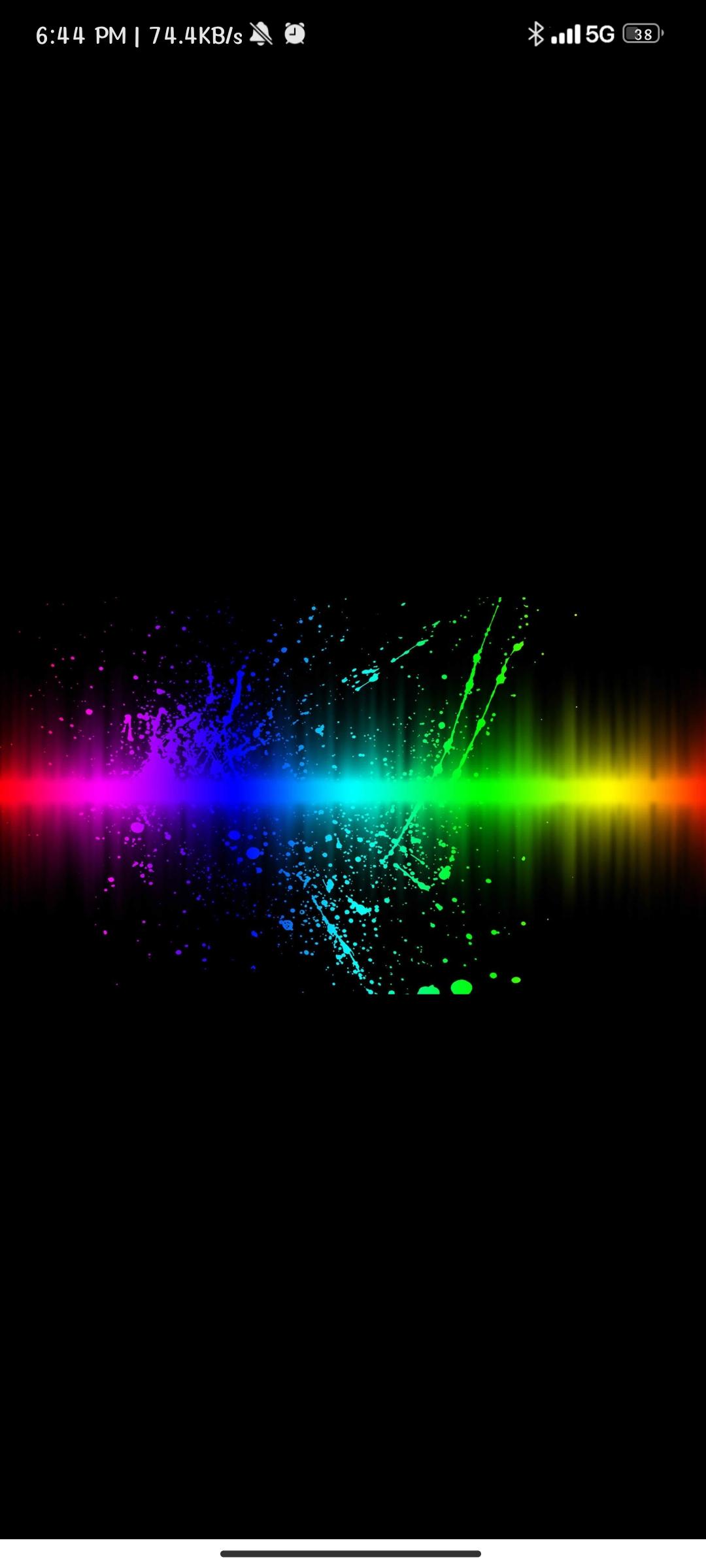Using the flutter provider, creating a dynamic movie list application.
 SHAILAJA GAJERA
SHAILAJA GAJERA
Using Flutter and the Provider package, we'll look at how to make a dynamic movie list app in this easy-to-follow Flutter is a popular open-source UI framework for creating natively built desktop, web, and mobile applications from a single codebase. In Flutter, the Provider state management solution makes it easier to maintain and share application state. You'll have a fully functional movie list app with dynamic movie data fetching and display at the conclusion of this lesson.
Step 1: Set Up a New Flutter Project.
Step 2: Add Dependencies.
dependencies:
flutter:
sdk: flutter
provider: ^5.0.3
Run flutter pub get to fetch and install the dependencies.
Step 3: Create the Movie Model
class Movie {
final String title;
final String? duration;
Movie({required this.title, this.duration});
}
Step 4: Create the Movie Provider.
Next, create a folder named providers. Inside this folder, create a file named movie_provider.dart to define the MovieProvider class:
import 'package:flutter/cupertino.dart';
import '../Model/movie_model.dart';
class MovieProvider with ChangeNotifier{
final List<Movie> _movies = [
Movie(title: "Avatar", duration: "162 minutes"),
Movie(title: "Inception", duration: "148 minutes"),
Movie(title: "Gadder 2", duration: "142 minutes"),
Movie(title: "OMG 2", duration: "165 minutes"),
Movie(title: "GolMal", duration: "184 minutes"),
Movie(title: "Ready", duration: "166 minutes"),
Movie(title: "Paa", duration: "148 minutes"),
Movie(title: "BodyGuard", duration: "150 minutes"),
Movie(title: "Hamshakal", duration: "170 minutes"),
Movie(title: "Houseful", duration: "184 minutes"),
Movie(title: "Interstellar", duration: "181 minutes"),
Movie(title: "The Dark Knight", duration: "177 minutes"),
Movie(title: "मुझसे दोस्ती करोगे", duration: "179 minutes"),
Movie(title: "दिलवाले दुल्हनिया ले जायेंगे", duration: "169 minutes"),
Movie(title: "कभी ख़ुशी कभी ग़म", duration: "168 minutes"),
Movie(title: "बाहुबली: द बेगिनिंग", duration: "182 minutes"),
Movie(title: "यह जवानी है दीवानी", duration: "182 minutes"),
Movie(title: "रॉकस्टार", duration: "182 minutes"),
Movie(title: "જોન જનમ જનાર્ડન", duration: "182 minutes"),
Movie(title: "પોલામ પોલ", duration: "182 minutes"),
Movie(title: "બેબીની ચમક પડે નહીં", duration: "182 minutes"),
Movie(title: "ಹೆಗ್ಗಡೆ ಮಲ್ಲೆ", duration: "182 minutes"),
Movie(title: "బాహుబలి", duration: "182 minutes"),
Movie(title: "പ്രേമം", duration: "182 minutes"),
Movie(title: "പ്രാഞ്ചൻ", duration: "182 minutes"),
];
List<Movie> get movies => _movies;
final List<Movie> _myList = [];
List<Movie> get myList => _myList;
void addToList(Movie movie){
_myList.add(movie);
notifyListeners();
}
void removeFromList(Movie movie){
_myList.remove(movie);
notifyListeners();
}
}
Step 5: Implement the Main Application
main.dart file, set up the main application entry point:
import 'package:flutter/material.dart';
import 'package:flutter_provider/Providers/movie_provider.dart';
import 'package:flutter_provider/home_screen.dart';
import 'package:provider/provider.dart';
void main() {
runApp(
ChangeNotifierProvider<MovieProvider>(
child: const MyApp(),
create: (_) => MovieProvider(),
),
);
}
class MyApp extends StatelessWidget {
const MyApp({Key? key}) : super(key: key);
@override
Widget build(BuildContext context) {
return MaterialApp(
title: 'Movie App',
debugShowCheckedModeBanner: false,
theme: ThemeData(
cardColor: Colors.purple[100],
),
home: const Scaffold(
body: HomeScreen(), // Replace with your actual widget tree
),
);
}
}
Step: 6
I'll explore how to enhance a Flutter movie app by adding a "Favorites" feature using the Provider package. This feature allows users to mark their favorite movies and showcases the power of Provider for managing state in Flutter.
import 'package:flutter/material.dart';
import 'package:flutter_provider/Providers/movie_provider.dart';
import 'package:provider/provider.dart';
import 'fav_movie.dart';
class HomeScreen extends StatefulWidget {
const HomeScreen({Key? key}) : super(key: key);
@override
HomeScreenState createState() => HomeScreenState();
}
class HomeScreenState extends State<HomeScreen> {
@override
Widget build(BuildContext context) {
var movies = context.watch<MovieProvider>().movies;
var myList = context.watch<MovieProvider>().myList;
return Scaffold(
appBar: PreferredSize(
preferredSize: const Size.fromHeight(kToolbarHeight + 100),
// Adjust the height as needed
child: Stack(
children: [
Container(
decoration: const BoxDecoration(
image: DecorationImage(
image: NetworkImage(
'https://static.wixstatic.com/media/1d6090cc4bbf44628dfd82a1979770e8.jpg/v1/fill/w_980,h_490,fp_0.50_0.50,q_90,usm_0.66_1.00_0.01/1d6090cc4bbf44628dfd82a1979770e8.jpg'),
// Replace with your app bar background image asset
fit: BoxFit.cover,
),
),
),
AppBar(
title: const Text("Provider"),
backgroundColor: Colors.transparent,
// Make the AppBar background transparent
elevation: 0,
),
],
),
),
body: Padding(
padding: const EdgeInsets.all(16),
child: Column(
crossAxisAlignment: CrossAxisAlignment.stretch,
children: [
ElevatedButton.icon(
onPressed: () {
Navigator.of(context).push(MaterialPageRoute(
builder: (context) => const MyListScreen()));
},
icon: const Icon(Icons.favorite),
label: Text(
" Go to my List(${myList.length})",
style: const TextStyle(fontSize: 25),
),
style: ElevatedButton.styleFrom(
primary: Colors.black,
padding: const EdgeInsets.symmetric(vertical: 20),
),
),
const SizedBox(height: 15),
Expanded(
child: ListView.builder(
itemCount: movies.length,
itemBuilder: (_, index) {
final currentMovie = movies[index];
return Card(
key: ValueKey(currentMovie.title),
color: Colors.red[900],
elevation: 4,
child: ListTile(
title: Text(
currentMovie.title,
style: const TextStyle(
fontWeight: FontWeight.bold,
color: Colors.white,
fontSize: 21),
),
subtitle: Text(
currentMovie.duration ?? 'No Information',
style: const TextStyle(
fontWeight: FontWeight.bold,
color: Colors.black,
fontSize: 17),
),
trailing: IconButton(
icon: Icon(
Icons.favorite,
color: myList.contains(currentMovie)
? Colors.black
: Colors.white,
size: 30,
),
onPressed: () {
if (!myList.contains(currentMovie)) {
context
.read<MovieProvider>()
.addToList(currentMovie);
} else {
context
.read<MovieProvider>()
.removeFromList(currentMovie);
}
},
),
),
);
},
),
),
],
),
),
);
}
}
Adding the Favorites Feature:
Understanding the App Structure: The Flutter movie app consists of a home screen displaying a list of movies. Each movie card contains a title, duration, and a heart-shaped icon indicating whether it's a favorite.
Defining Movie Lists: We have two lists:
moviesandmyList.moviescontains all available movies, whilemyListstores the user's favorite movies.Displaying Favorites: We display the list of movies in a
ListView.builder, with a heart icon that changes color based on whether the movie is in the user's favorites list.Toggling Favorites: When the heart icon is pressed, we use
context.read<MovieProvider>()to access theMovieProviderand calladdToListorremoveFromListto update the favorites list.Navigating to Favorites: We've added a button that allows users to navigate to a screen called
MyListScreen, where they can see their favorite movies.
Step: 7
I'll explore how to create a "Favorites" list in a Flutter app using the Provider package. This feature allows users to mark and manage their favorite items, a common and useful functionality in many mobile applications.
import 'package:flutter/material.dart';
import 'package:flutter_provider/Providers/movie_provider.dart';
import 'package:provider/provider.dart';
class MyListScreen extends StatefulWidget {
const MyListScreen({Key? key}) : super(key: key);
@override
MyListScreenState createState() => MyListScreenState();
}
class MyListScreenState extends State<MyListScreen> {
@override
Widget build(BuildContext context) {
final _myList = context.watch<MovieProvider>().myList;
return Scaffold(
appBar: PreferredSize(
preferredSize: const Size.fromHeight(kToolbarHeight + 100),
// Adjust the height as needed
child: Stack(
children: [
Container(
decoration: const BoxDecoration(
image: DecorationImage(
image: NetworkImage(
'https://static.wixstatic.com/media/1d6090cc4bbf44628dfd82a1979770e8.jpg/v1/fill/w_980,h_490,fp_0.50_0.50,q_90,usm_0.66_1.00_0.01/1d6090cc4bbf44628dfd82a1979770e8.jpg'),
// Replace with your app bar background image asset
fit: BoxFit.cover,
),
),
),
AppBar(
title: Text("My List (${_myList.length})"),
backgroundColor: Colors.transparent,
// Make the AppBar background transparent
elevation: 0,
),
],
),
),
body: ListView.builder(
itemCount: _myList.length,
itemBuilder: (_, index) {
final currentMovie = _myList[index];
return Card(
key: ValueKey(currentMovie.title),
color: Colors.red[900],
elevation: 4,
child: ListTile(
title: Text(
currentMovie.title,
style: const TextStyle(
fontWeight: FontWeight.bold,
color: Colors.white,
fontSize: 21),
),
subtitle: Text(
currentMovie.duration ?? 'No Information',
style: const TextStyle(
fontWeight: FontWeight.bold,
color: Colors.black,
fontSize: 17),
),
trailing: IconButton(
icon: const Icon(Icons.delete_forever,color: Colors.black,),
onPressed: () {
context.read<MovieProvider>().removeFromList(currentMovie);
},
),
),
);
},
),
);
}
}
Building the Favorites List:
Understanding the App Structure: Our Flutter app consists of a movie list screen and a favorites list screen. Users can add movies to their favorites list from the movie list screen.
Displaying the Favorites List: In the
MyListScreen, we usecontext.watch<MovieProvider>()to access theMovieProviderand retrieve the user's favorites list,_myList.Visualizing Favorites: We display the favorite movies in a
ListView.builder, showing each movie's title, duration, and a delete icon.Removing from Favorites: When the delete icon is tapped, we use
context.read<MovieProvider>()to remove the movie from the favorites list using theremoveFromListmethod.
Subscribe to my newsletter
Read articles from SHAILAJA GAJERA directly inside your inbox. Subscribe to the newsletter, and don't miss out.
Written by
